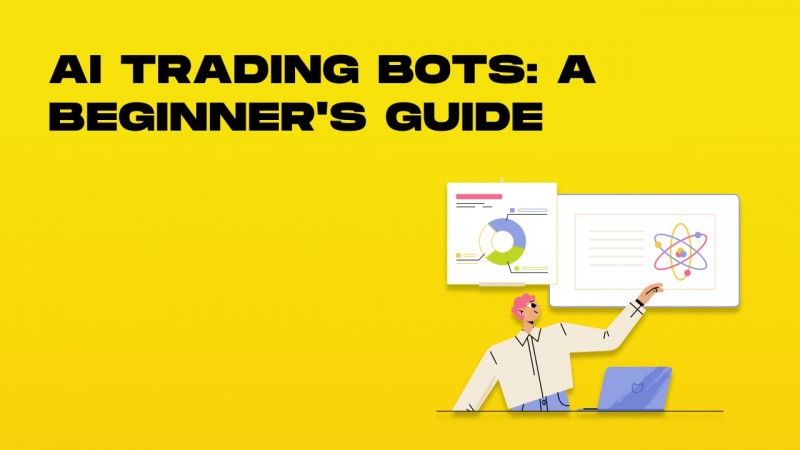20 Excellent Suggestions For Deciding On AI Stock Trading Websites
20 Excellent Suggestions For Deciding On AI Stock Trading Websites
Blog Article
Top 10 Tips On Assessing The Market Coverage Of Ai Software For Predicting And Analysing Stocks
When evaluating AI trading platforms that can predict or analyze stocks, market coverage is a key aspect to consider. It determines what assets and markets are readily available. If you choose a platform with comprehensive coverage, you can diversify your portfolio and make the most of opportunities across the globe. Additionally, you can adapt to a variety of trading strategies. Here are 10 suggestions on how to evaluate the coverage offered by platforms.
1. Evaluate Supported Asset Classes
Stocks: Make sure that the platform includes stocks from the top stock exchanges, which include NYSE, NASDAQ and LSE.
ETFs Find out if the platform allows you to choose from a large number of ETFs, which gives you an array of exposure.
Futures and options. Check to see whether your platform has derivatives such as futures, options or other instruments leveraged.
The commodities and forex. Check to see whether there are any forex pairs that are available, in addition to precious metals, energy commodities, and other agricultural commodities.
Cryptocurrencies: Check if the platform supports major copyright (e.g., Bitcoin, Ethereum) and altcoins.
2. Check Coverage Area
Global markets: Ensure that the platform has major markets in the world such as North America, Europe and Asia-Pacific.
Regional focus: Check if the platform is focused on particular markets or regions that are in line with your preferences for trading.
Local exchanges: Find out if the platform supports regional or local exchanges that relate to your specific location or plan.
3. Comparing Real-Time Data to Delayed Data Delayed Data
Real-time data: Ensure that the platform is able to provide real-time market information to make quick decisions, particularly for trading that is active.
Information that is delayed: Find out if delayed data are available for free or at discounted, which could suffice for investors with an eye on the long term.
Data latency - Make sure that the platform reduces delay of feeds that are real-time. This is crucial for traders with high frequency.
4. Review the availability of historical data
In depth of Historical Data Check that the platform has a large amount of historical data for backtesting, analysis and testing (e.g. 10+ years).
Look for levels of granularity. Historical data can include intraday, daily and weekly the granularity.
Corporate actions - Check previous data to confirm that it covers stock splits, dividends as well as other corporate activities.
5. Examine the Order Book and Market Depth Information
For a better price discovery experience Make sure the platform is equipped with Level 2 data.
Be sure to check for live bidding and asking spreads. This will guarantee that pricing is accurate.
Volume data: Find out if your platform offers specific volume data for analyzing liquidity and market activity.
6. Assess Coverage to determine Indices and Sectors
Major indices: Check that the platform includes important benchmarking indices, index-based strategies and other reasons (e.g. S&P 500, NASDAQ 100, FTSE 100).
Industry-specific data: If you want to conduct a more specific analysis, look into whether there is data available for certain sectors.
Customized indices. Check that the platform can track or create customized indices that meet your criteria.
7. Assess the Integration of News and Sentiment Data
News feeds : Ensure that you use a platform that incorporates live news feeds, particularly from reliable media outlets (e.g. Bloomberg and Reuters) to cover the most significant market news events.
Sentiment Analysis: Verify if the platform offers sentiment analysis tools that are based on news, social media or other sources of data.
Event-driven strategies: Determine whether the platform supports events-driven trading strategies (e.g., earnings announcements or economic reports, etc.).
8. Make sure you have Multi-Market Trading Capabilities
Cross-market trading: Make sure the platform allows trading across multiple assets, markets, and exchanges from an interface that is single.
Currency conversion: Check if your platform supports multiple-currency trading and automated currency conversion.
Support for time zones: Find out whether the platform allows trading in different time zones for global markets.
9. Review the coverage of different data sources
Alternative data - Examine for alternative data sources included in the platform (e.g. web traffic, satellite imagery or credit card transactions). This can give you unique information.
ESG data: Determine if the platform includes environmental as well as social and governance (ESG) information to support socially responsible investment.
Macroeconomics data: for a more fundamental analysis, ensure the platform contains macroeconomic indicators such as GDP (gross domestic product) inflation rates, GDP and interest rate.
Review the User Feedback and Market Reputation
User reviews: Research reviews from users to assess the market coverage of the platform and its quality of service.
Reputation of the industry Check whether there are awards or experts who recognize the platform for its broad coverage of markets.
Case studies: Look for case studies, testimonials, and other details that highlight the platform's performance on certain assets or markets.
Bonus Tips
Trial period: You may make use of an demo, trial or free trial to evaluate the coverage of markets as well as data quality.
API access: Check if your platform's API allows access to market data programmatically in order to conduct custom analysis.
Customer Support: Make sure that the platform is able provide support for any issues related to data or market problems.
With these suggestions, you can effectively assess the market coverage of AI trading platforms that predict or analyze stocks, ensuring you choose the one that gives you access to the markets and information that you require for a successful trading. A broad market coverage will allow you to diversify and expand the possibilities of your portfolio. It also assists you adjust to changes in the market. Follow the recommended investment ai for more examples including AI stock market, AI stock market, ai trading, ai trading, stock ai, incite, best ai trading software, stock ai, AI stock trading, ai investing app and more.
Top 10 Tips To Evaluate The Reputation Of Ai Stock Predicting/Analyzing Trading Platforms
For AI-driven platforms for trading and stock predictions, it is crucial to check their reputation and reviews. This will guarantee that they are reliable as well as trustworthy and efficient. Here are 10 top methods to determine their credibility and review:
1. Check Independent Review Platforms
Tips: Search for reviews on trusted platforms like G2, copyright, or Capterra.
Why independent platforms provide unbiased feedback from real users.
2. Study user testimonials and cases studies
Tips: You can find testimonials from users and case studies either on the platform's site or other third-party sites.
Why: These provide insights into performance in the real world and user satisfaction.
3. Review Expert Opinions and industry recognition
Tips - Find out whether reliable media outlets, industry analysts and financial analysts have evaluated or recommended a particular platform.
Expert endorsements provide credibility to claims made by the platform.
4. Social Media Sentiment
Tip: Monitor social media sites (e.g. Twitter. LinkedIn. Reddit.) to learn what others are talking about and how they feel about it.
Social media lets you get the honest opinions of users as well as trends.
5. Verify Compliance with Regulatory Regulations
Make sure that your platform is in compliance with the financial regulations (e.g. SEC, FINRA), and privacy regulations (e.g. GDPR).
The reason: Compliance ensures the platform operates legally and with integrity.
6. Make sure that there is transparency in performance Metrics
Tip: Check if the platform has transparent performance metrics, like the accuracy of rates, ROI, and backtesting results.
Transparency is essential as it helps build trust and allows users to assess the performance of the system.
7. How to Evaluate Customer Support
Read the reviews to get information about customer service and its effectiveness.
The reason: Having dependable support is key to resolving user issues and creating a positive overall experience.
8. Check for Red Flags in Reviews
TIP: Pay attention to complaints that have a tendency to recur like ineffective service, hidden fees or lack of regular updates.
The reason for this is that a consistent negative feedback suggests that there are problems on the platform.
9. Evaluate User Engagement and Community Engagement
Tip: Check to see whether there's an active community of users using the platform (e.g. Discord groups, forums) and whether they communicate with their users on a regular basis.
Why strong communities are a sign of that users are satisfied and continue to show support.
10. Check out the history of the company.
Check out the company's past as well as its leadership and the overall performance of the financial technology industry.
What's the reason? A track record of success boosts confidence in the reliability of platforms and knowledge.
Compare Multiple Platforms
Compare the reputations and ratings of the various platforms to figure out which one is the most appropriate to your needs.
These guidelines will allow you evaluate thoroughly the credibility and reviews of AI platforms for stock prediction and trading platforms. This will allow you to select a reliable and effective solution. Read the top additional info for site examples including AI stock investing, best stock prediction website, ai software stocks, best ai penny stocks, best ai trading platform, AI stock price prediction, best ai trading platform, invest ai, ai options, best ai trading platform and more.